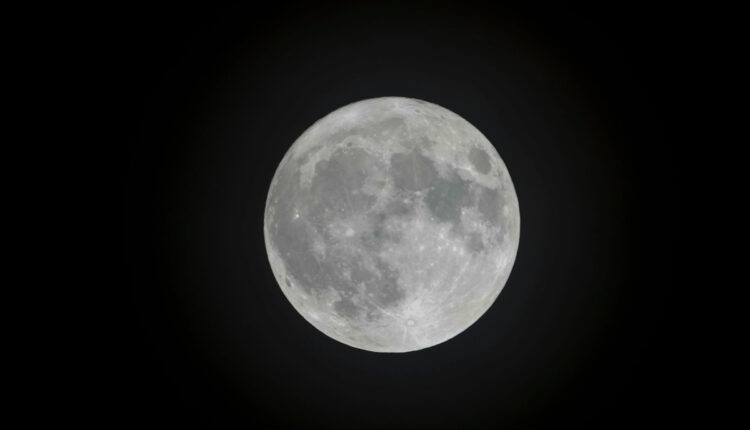
Of Chandrayaan, Witches, And Women Asking For The Moon
This story first appeared in NDTV.com
Women belong to the moon and vice versa. As the world slows down in a collective gasp to witness the history-making landing of Chandrayaan-3, let this be a primer on how women across time and space have been linked to the celestial body. Trust me, it goes beyond Chaand sa roshan chehra…
Women have often been depicted as always demanding the moon, in folklore, literature, and pop culture. Remember Rhett Butler chiding Scarlett O Hara in Gone With the Wind? Or Madhuri Dixit crooning “Mujhko Chaand laake do…” in a bad Hindi film? Ritu Karidhal Srivastava, the ISRO scientist leading India’s historical Moon mission, has been seeking the same.
The moon is women’s comfort space, a Utopian room of one’s own, and the oft-repeated dramatic imagery of women escaping to this celestial body is used both to depict women’s descent into madness or their defiance against patriarchal strictures. Multiple waves of feminism have educated us to decry the existence of cauldron-stirring witches, though women continue to be killed if they are suspected to be witches. All of this has been allowed to happen because women’s defiance, their demands, and their pursuits of forbidden knowledge threaten patriarchy. Instead of ceding power by ceasing to be the gatekeepers of knowledge, it’s much easier for men to vilify women’s demands as impossible asks-like wanting the moon.
In most cultures, there are linkages between the lunar cycle and women’s reproductory system. Many companies now capitalise on it by using various names for the moon to brand their menstrual hygiene products – Mooncup, MeLuna, Lena, Lunette and many more. Scientific research, however, is still struggling to prove conclusively any demonstrable synchronising. But that doesn’t arrest the idea that women’s tempers are governed by the moon and the full moon night is the night of the hysterical woman. An assertive woman is a hysterical woman. A vocal woman is a “hormonal” woman. And because hysteria (think words like luna-cy, luna-tic) and hormones are allegedly impacted by the moon.
Women are the creatures of the moon.
Artemis and Diana of Greco-Roman mythology are the lunar deities that also govern the wilderness-the unconquered space beyond civilisation. Isis, the Egyptian moon goddess, is also the goddess of magic, again a realm beyond rationality. Women are, thus, the creature of Nature, while men continue to be the products of Nurture-to use Rousseau’s binary. Women are difficult, men are easy, women Darkness, men Light. And when women operate in the light-the moonlight-they are transgressing witches that threaten the order of society. Women of the moon-the so-called witches-have been some of the first dissenters of patriarchy.
Against the male-populated domain of science and ‘rational’ knowledge that actively prohibited women’s entry, women created the lunar universe of intuition, camaraderie, and dissent-a shared space for blood, milk and tears. The romantic gaze of poets tried to do women a favour by using the moon to glorify their physiology. Women’s temperament took a backseat and their beauty was linked with the moon. Beloved became the moon: bright yet gentle, playful yet soothing, and mystical yet submissive. Benign patriarchy.
But why talk about these things now? Have we not progressed enough? Isn’t there gender equality all around us? What more do women want? What about men’s rights? To come back to India’s moon mission, isn’t ISRO a triumph of women’s participation? Haven’t women scientists been the face of multiple space and missile projects in the past?
Because women do not need an association with the moon if they cannot land on it.
Because it has taken even NASA more than half a century to recruit a woman, Christina Koch, to travel to the moon after Neil Armstrong’s landing.
Because ISRO’s celebration of women scientists pales against the fact that the organisation has never had a woman chief.
Because despite the existence of women fighter pilots in India, none of them were recruited for its Gaganyaan mission.
Because witch-burning is still a reality in many Indian villages. Because menstrual taboos still end up killing women.
“Because we donated our jewellery for the tabernacle (and by we I mean women and by women I mean allegories)
We have been assigned the moon.
Not a moon, our moon, our small, argumentative moon.
Sea of crisis and all – the old ‘heave-ho stone’ dragging waves over pebbles since the dawn of time.
58% of women say ‘take what you’re given, lest they assign us an even smaller celestial body.'”
The above excerpt is from Ella Frears’s poem ‘Moon Myth’.
